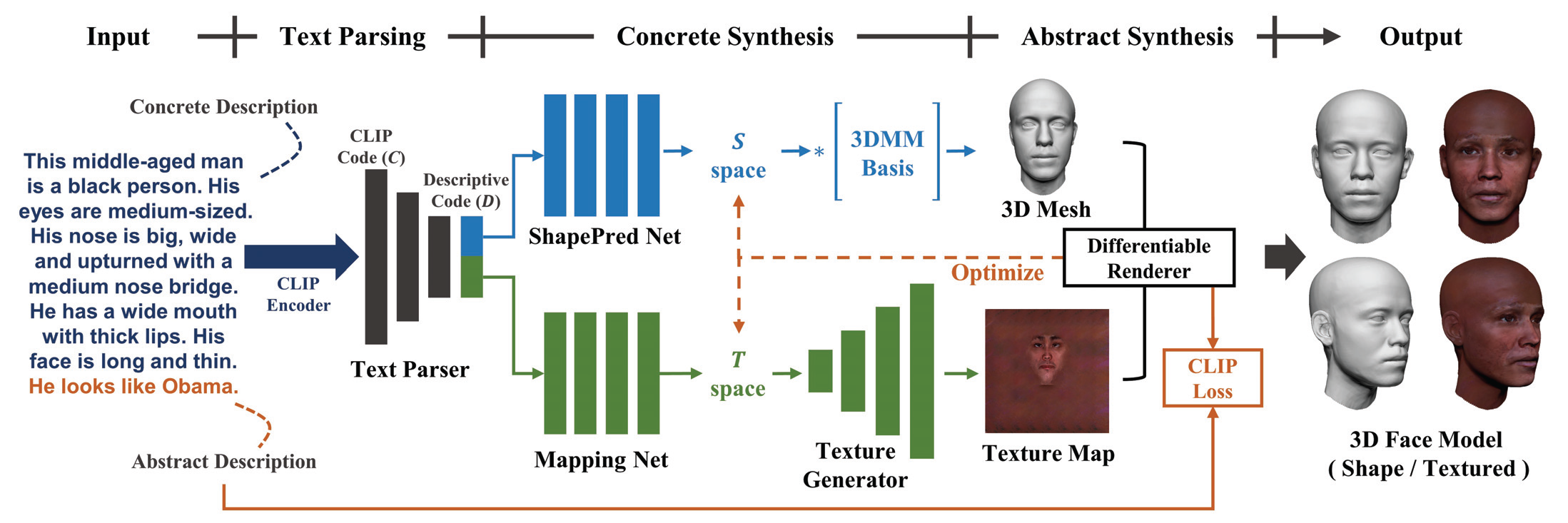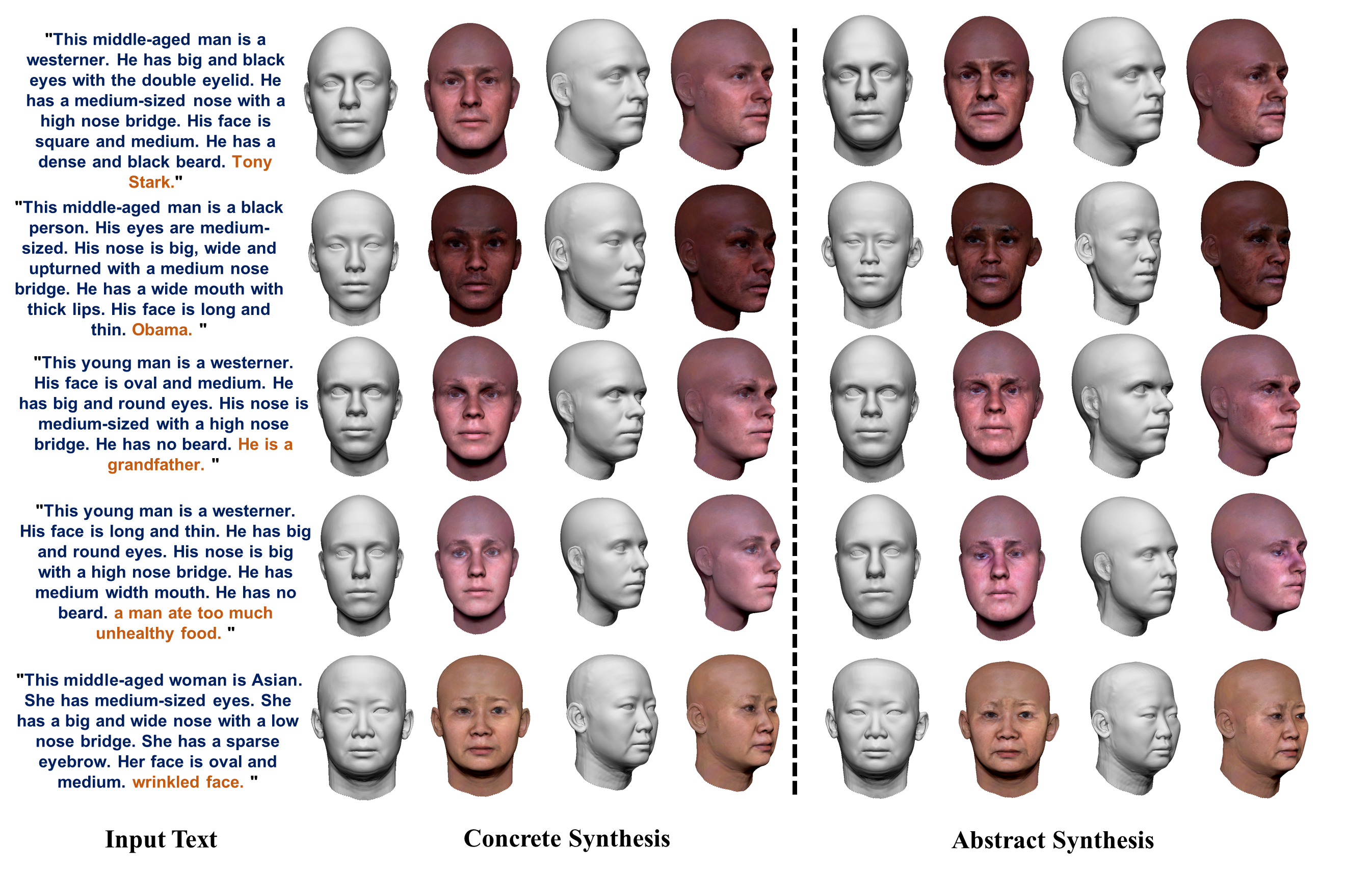This is the official repository of ''High-fidelity 3D Face Generation from Natural Language Descriptions'', CVPR 2023. [Project Page] [arXiv]
[Updates]
- 2023.05.04: Release the inference code and pre-trained model.
[To do list]
- Release Describe3D Dataset
- Python = 3.8
- pytorch = 1.7.1
- cudatoolkit = 11.0
- First, you need to build the virtual environment.
conda create -n describe3d python=3.8- Then, you need to install CLIP. Please refer to https://github.com/openai/CLIP
- Install other dependencies.
pip install -r requirements.txt- Download the pre-trained texture generation model and put it into the checkpoints/texture_synthesis/
https://drive.google.com/drive/folders/1zqCLaF-KzhWy_YSMqKf15aEKiv19lXz5?usp=sharing
- Then you can run the main.py to generate 3D Faces.
python main.py --name="your model name" --descriptions="the description of the face you want to generate." --prompt="the abstract descriptions"Here is an example.
python main.py --name="Stark" --descriptions="This middle-aged man is a westerner. He has big and black eyes with the double eyelid. He has a medium-sized nose with a high nose bridge. His face is square and medium. He has a dense and black beard." --prompt="Tony Stark." --lambda_latent=0.0003 --lambda_param=3The abstract synthesis results are affected by the regularization coefficient. Decrease lambda_param / lambda_latent when you want more changes of shape / texture. On the contrary, you can increase them.

